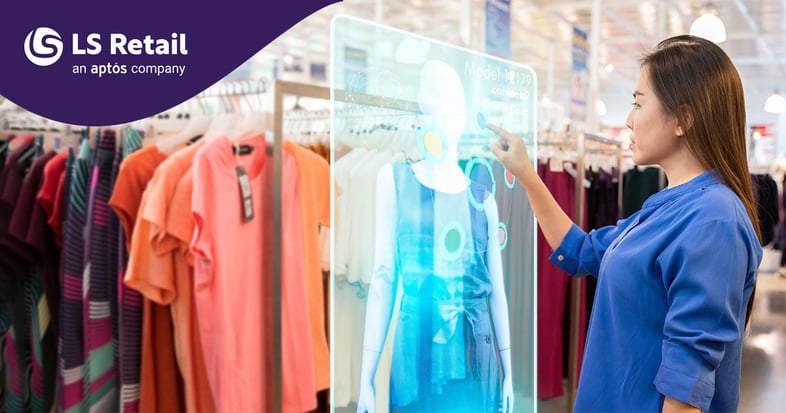
A store is no longer just a place to buy products. As online shopping becomes faster and more seamless, physical retailers are rethinking what a store should be—turning it into a space for discovery, creativity, social connection, and immersive experiences.
The most forward-thinking brands are shifting from traditional retail models to innovative, tech-enabled environments that blur the lines between online and in-person shopping. Some are focusing on personalization and AI-powered assistance, while others are transforming their stores into event spaces, cultural hubs, or interactive showrooms.
Here are the most exciting ways retailers are reinventing the shopping experience and reshaping the future of physical stores.
1. Enhancing interaction with AI and smart fitting rooms
Retailers are moving beyond simple try-on areas by integrating AI-powered smart fitting rooms and interactive shopping assistants.
Instead of just testing products, customers can now receive real-time recommendations based on their choices. Uniqlo and H&M have introduced AI-powered mirrors that suggest matching outfits, while Zara’s fitting rooms automatically detect items and let shoppers request different sizes via a touch screen.
These technologies remove common frustrations, making in-store shopping smoother, faster, and more personalized.
2. Elevating personalization with AI-driven styling and on-demand customization
Personalization isn’t just about tailoring services anymore—AI is making it easier than ever for shoppers to find products that match their unique preferences.
Retailers like Amazon and Stitch Fix use AI-powered styling assistants to curate personalized recommendations. Meanwhile, brands like Levi’s and Nike have introduced on-demand customization kiosks, where customers can design their own sneakers or clothing and see them produced in minutes.
By making personalization an instant, interactive experience, brands are turning their stores into creative spaces where customers actively shape their purchases.
3. Blurring the lines between digital and physical shopping
Augmented reality (AR) and virtual reality (VR) are no longer just gimmicks—they’re becoming essential in bridging the gap between e-commerce and in-store shopping.
- Sephora’s virtual try-on stations let customers test makeup without touching a product.
- IKEA’s AR app allows shoppers to see how furniture would look in their homes before purchasing.
- Burberry’s flagship stores integrate real-time digital overlays, offering interactive brand storytelling as customers walk through the space.
By merging online convenience with hands-on product interaction, retailers are giving customers the best of both worlds.
4. Making social media a live part of the shopping experience
Instead of just designing stores for Instagrammable moments, retailers are actively integrating social media engagement into shopping.
- Adidas and Coach use QR codes that allow customers to instantly share outfits on social media and unlock exclusive content.
- Nike’s flagship locations feature livestream shopping zones, where influencers showcase new products to online audiences directly from the store.
- Glossier’s stores double as community spaces, hosting meetups and customer events.
Social media isn’t just about showcasing a space anymore—it’s about turning in-store shopping into a shareable, interactive experience.
5. Bringing storytelling to life through immersive experiences
Traditional retail storytelling—like The North Face’s product history displays—is evolving into fully immersive experiences that connect customers emotionally with the brand.
- Patagonia’s stores host sustainability workshops and product repair stations, reinforcing their mission beyond just selling clothes.
- Lush Cosmetics eliminates packaging in some locations, turning sustainability into a lived experience.
- Sonos offers immersive listening rooms, where customers experience products through curated soundscapes.
Instead of just telling a story through displays, retailers are inviting customers to be part of it.
6. Turning stores into multi-purpose destinations
Retail spaces are becoming hybrid environments that offer more than just shopping.
- Rapha’s cycling stores include cafés where customers can watch races and test high-end gear.
- The Starbucks Reserve Roasteries in Milan and Tokyo blend coffee, education, and AR experiences to create a multi-sensory journey.
- Gentle Monster continues to redefine retail by making its stores feel more like art galleries than traditional shopping spaces.
By creating destinations where people want to spend time, retailers give customers more reasons to visit—and return.
Redefining the role of the physical store
Retailers who thrive in this new era of shopping are the ones who see their stores as experience hubs, not just places to sell products. Whether through AI-driven personalization, digital integration, or social media engagement, modern brands are creating compelling reasons for customers to visit in person.
To stay ahead, brands need to ask: how can our stores offer something customers can’t get online?
Want to explore more strategies shaping the future of retail? Download our e-book and start planning your next evolution.

